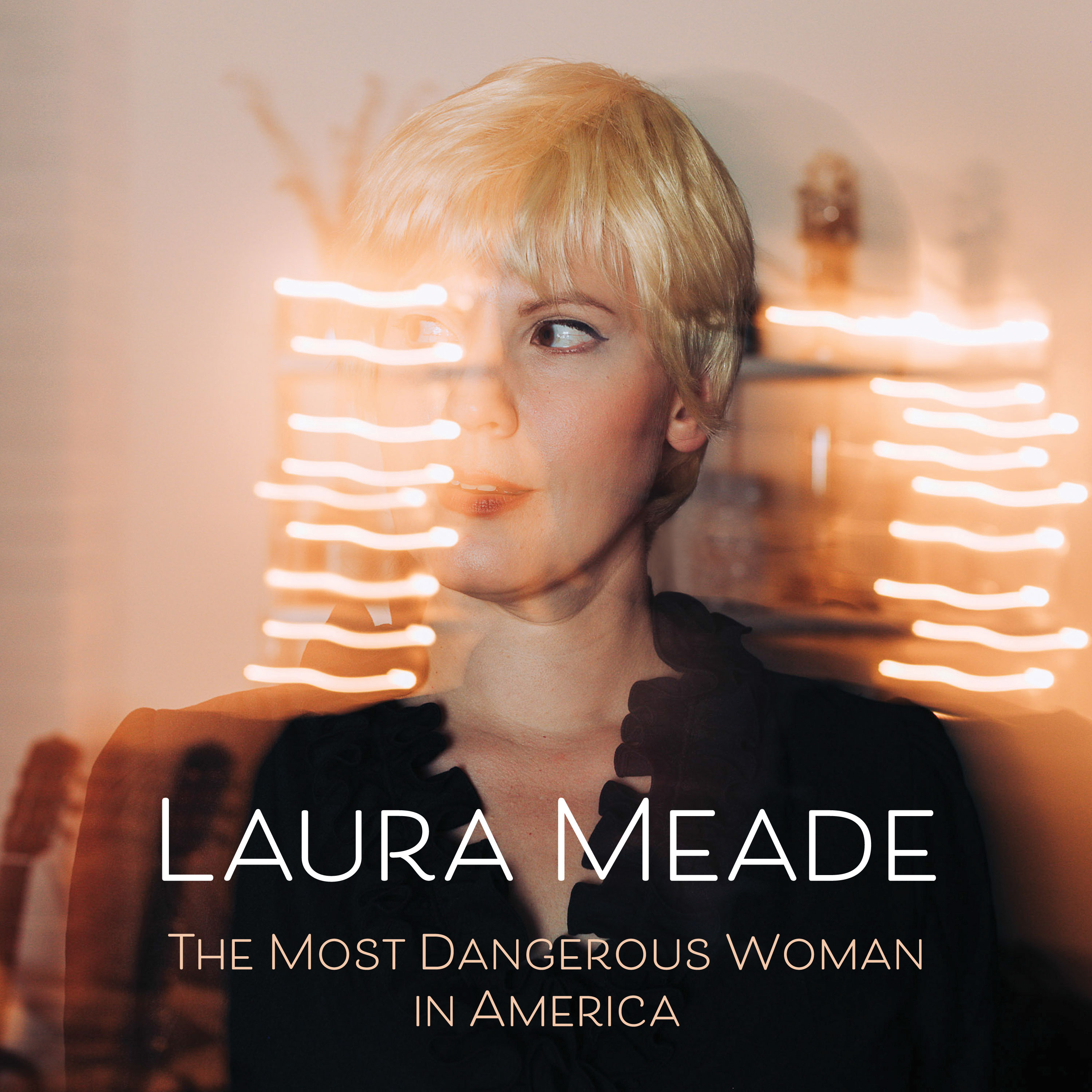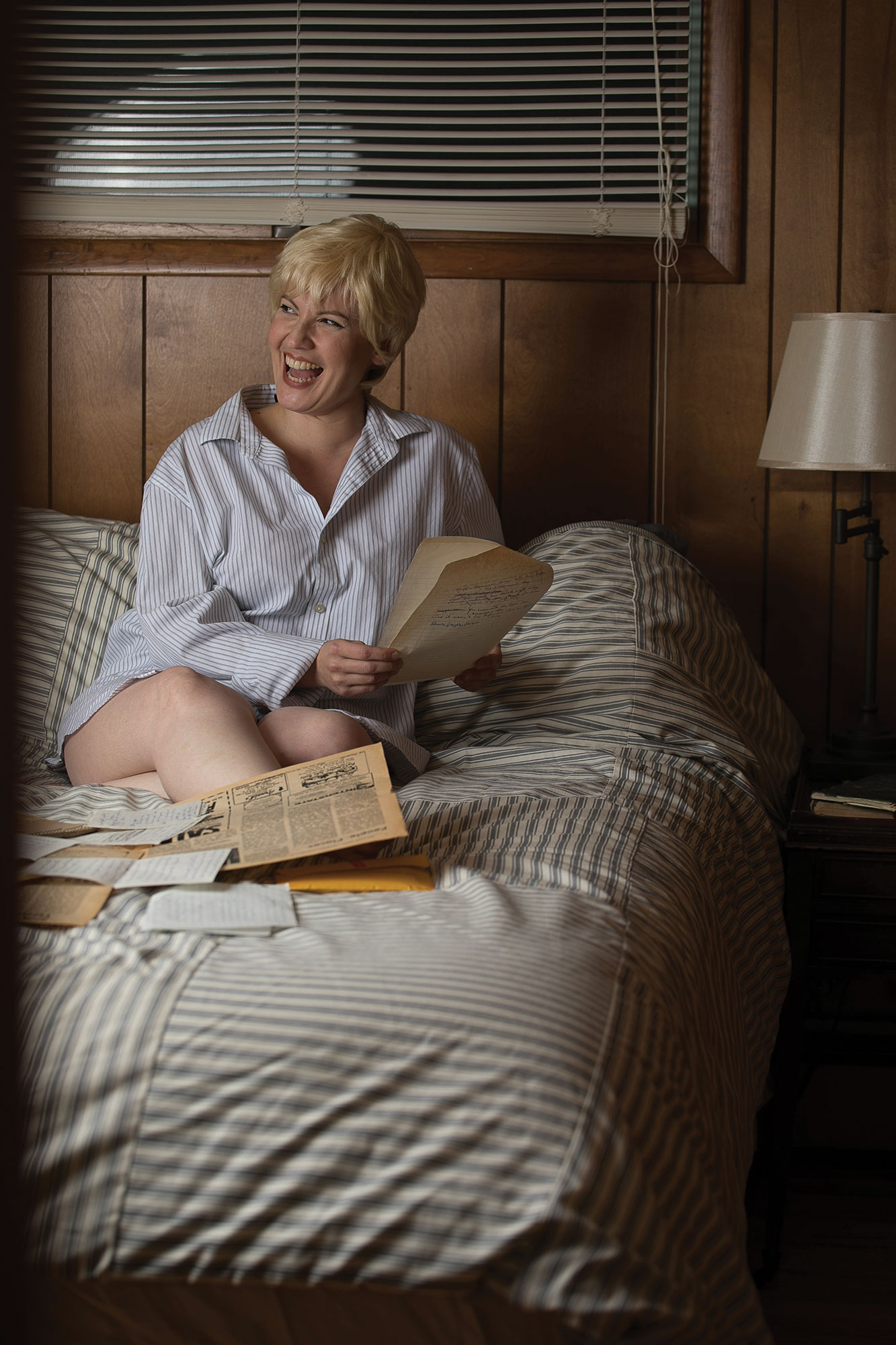Meet Laura Meade, the most dangerous woman in America!
On her latest solo album, IZZ’s Laura Meade turns history into herstory while exploring Hollywood’s love-hate relationship with female celebrities...

When you can’t go anywhere in the real world, you go to new places in your head. That’s how it proved for Laura Meade when she and her partner, John Galgano, found touring and recording plans for their band IZZ shelved due to the pandemic. The New York-based prog septet’s reputation has steadily grown across seven studio albums, with the voices of Meade and Anmarie Byrnes providing alluring counterparts to Tom and John Galgano’s leads.
Meade released a debut solo album, Remedium, in 2018, but when she and Galgano found themselves confined to their Brooklyn base last year, her loose plans of following it up were suddenly accelerated as band schedules were put on ice. The result is The Most Dangerous Woman In America, a concept album the couple co-wrote, which, in contrast to Remedium’s personal focus (touching on Meade’s struggle with and recovery from MS), sees the singer adopt the persona of an unnamed Hollywood star who finds herself buckling under the weight of her own fame and, it is suggested, infamy.

There’s a palpable sense of claustrophobia and anxiety about the album, from the urgent 6/8 piano-led Leaving through to the persecution complex of the album’s title track to the darting, looking-over-your-shoulder neurosis of recent single Burned At The Stake. But throughout there’s a sense of a restless soul struggling to make peace with herself or the expectations of a judgemental, sometimes parasitical society.
The image of Meade on the album sleeve, her curly dark hair cut and dyed blonde, reflects her full immersion in the character of the protagonist, something perhaps informed by the singer’s musical upbringing.
“My background was originally in musical theatre,” she tells Prog. “That’s what I grew up listening to. Not much of it is conceptually led, but when a concept does grab me, it grabs me hard. I see a big correlation between progressive and art rock, and musical theatre – the stories, the themes, the recurring themes. I would argue that any great thematic album could be a really great musical.”
That’s surely true of The Most Dangerous Woman In America, its central theme inspired by the love-hate relationship that the world’s most high-profile have with their status within our culture and society.
“You look at Hollywood celebrities,” says Meade, “and what they had to do to get where they are, the sacrifices they’ve made to get there, and the lives that they’re currently living. It does terrify me, and make me thankful I’m not in that position and I don’t believe I’ll ever be. But I do have this fascination and almost revulsion for what Hollywood can do to you. As a human being – and particularly as a woman – the ways it can twist you and take advantage of you, while giving you everything that you ever dreamed of. At what cost? There must be such high highs and such incredibly deep lows.”
Sign up below to get the latest from Prog, plus exclusive special offers, direct to your inbox!
In The Most Dangerous Woman In America, the protagonist (“an actor in her prime”) refers to having hoped to embrace fame on her own terms: ‘Just a little drink from the golden glass… dreams of being an iconoclast… eat from the table but not too much.’ It poses the tempting notion of being able to cherry-pick the good things about |fame and fortune while avoiding the bad. Clearly, it hasn’t worked, as elsewhere our hero finds herself ‘burned at the stake… burned by mistake’. And while she dreams of escaping somewhere far away (the recurring notion of walking anonymously by the banks of the Seine in Paris in this case), even those fantasies are populated by chattering voices in the background, and interwoven with resurgent anxieties: ‘neighbours in the street they recite my name… I don’t know what they want from me.’

The concept was inspired by a particular individual, one that Meade insists on not naming, which adds an extra level of intrigue to the piece.
“People kind of go super-sleuth, and try to work out who it is,” she smiles. “Some people have approached me privately with their theories, and said, ‘It’s okay, you can trust me, I won’t tell anyone else. Is it… X?’ You can pick out certain things from the album, and try to put the mystery together. But you can also take your own meaning from it, which is one reason why I haven’t named this person. Because that kind of takes away that layer of, well, what is it that you hear? And what is your interpretation of the entire song and the entire album? What does it bring out for you, regardless of who I might have written it about?”
That intense emotional climate captured on the album will surely chime with listeners most resonantly.
‘Can’t find quiet in a quiet place,’ Meade intones repeatedly in Burned At The Stake, which seems to echo the kind of struggles with mental health that many people have been suffering, particularly since March last year.
She says that in terms of its sonic atmosphere, the album wasn’t originally conceived this way. “At first I wanted a stripped down, acoustic-sounding record, with just vocals and piano, maybe a little guitar.”
But the mood that had taken hold by the spring of 2020, when recording began, informed the textures that emerged.
“Just like everyone else, John and I were stripped of everything we were going to do in 2020. And personally, I went through a major depression and identity crisis, like, ‘What do we do now? Does it even matter what we do?’ So that obviously had to have factored into what was written. And there was also this claustrophobic feeling of being restricted, being locked down. I guess it’s kind of the perfect marriage of art imitating life.”
As the concept of The Most Dangerous Woman In America took shape, John Galgano helped create rich studio soundscapes, while drummer Brian Coralian, restricted to electronic drums, added rhythms whose urgent but slightly austere pulse seem to suit the songs perfectly. Meanwhile, IZZ bandmate Tom Galgano, on keyboards and mixing, also contributed, on a suitably socially distanced basis. “Everything he added was not what I expected,” Meade explains. “But every single thing I heard, I was like, yeah, that’s what this has to be.”
So a sparse affair turned into a dense, immersive journey. And while there are strong echoes of Kate Bush’s meditations on female vulnerability on The Shape Of Shock and shades of the alienated alternate universe created by Bowie’s Berlin era, you can also hear the influence of classic prog loud and clear on the sweeping synth flourishes that bring Tell Me, Love and also on the staccato, Yes-like tapestry of instrumentation and stylistic mood swings that grace the eight-minute title track.
Meanwhile, musical motifs are reprised throughout the album like old neuroses that the protagonist just can’t shake off. All of which helps reinforce the feeling of a story with a beginning, middle and end, which you suspect live performances could further bring to life, with the kind of musical theatre touches Meade alluded to earlier.
“I’d love to perform it from beginning to end,” she admits, but of course in the current climate, who knows when that will be possible? The response to the album, though, has been enthusiastic, particularly among IZZ fans, even though an album focused around a sole female voice is a quite different proposition to IZZ’s multi-voiced, harmony-enhanced, musically eclectic prog symphonies.

Meade feels the US prog community might be small, but it’s loyal and knowledgeable, to the point where she and IZZ don’t need radio play and chart positions to feel appreciated.
“Once you find your people, you realise there’s so much going on,” she says. “When we play prog festivals, the reception there is so fantastic. Progressive rock fans in the USA are some of the most die-hard, truly supportive fans I’ve ever known.”
She, of course, deserves an even wider audience. But judging by the sentiments of The Most Dangerous Woman In America, maybe major league success wouldn’t suit her.
“Of course I want my music to reach as many people as possible. And I can understand that desire for fame and success. But this album also says, ‘careful what you wish for.’”
This article originally appeared in issue 122 of Prog Magazine.
Johnny is a regular contributor to Prog and Classic Rock magazines, both online and in print. Johnny is a highly experienced and versatile music writer whose tastes range from prog and hard rock to R’n’B, funk, folk and blues. He has written about music professionally for 30 years, surviving the Britpop wars at the NME in the 90s (under the hard-to-shake teenage nickname Johnny Cigarettes) before branching out to newspapers such as The Guardian and The Independent and magazines such as Uncut, Record Collector and, of course, Prog and Classic Rock.

